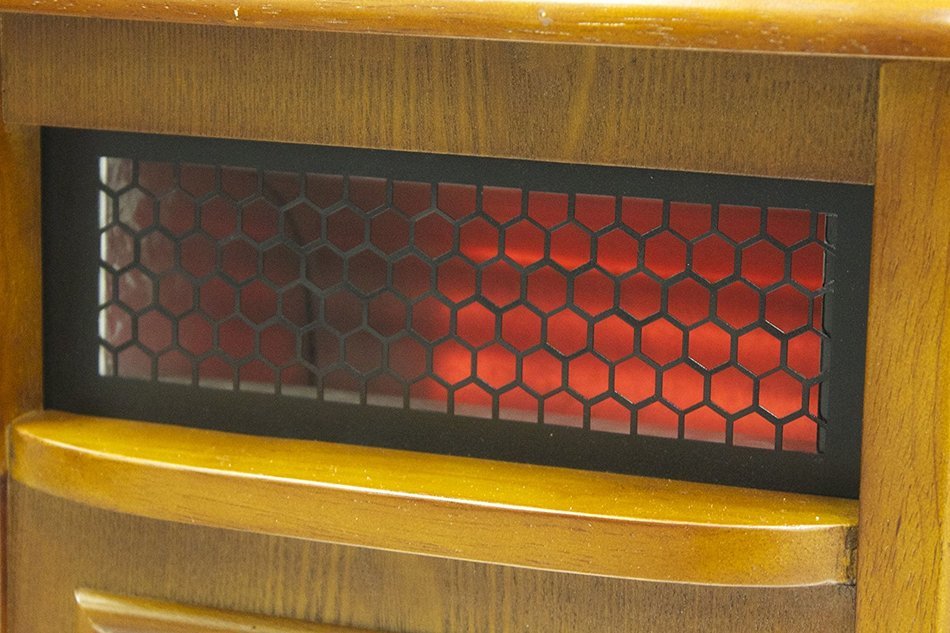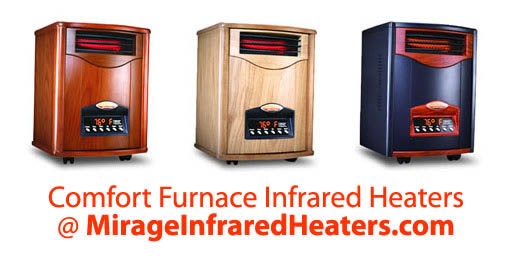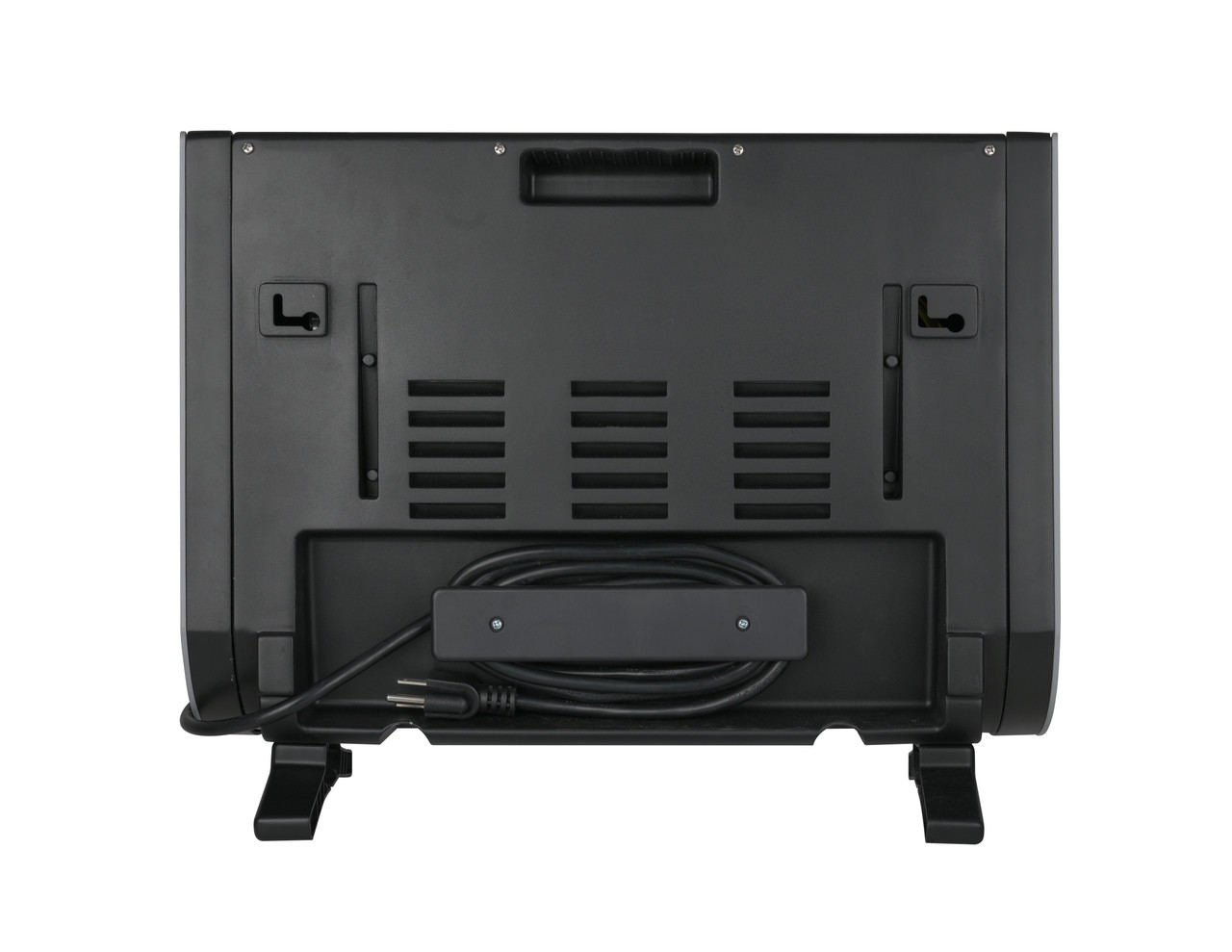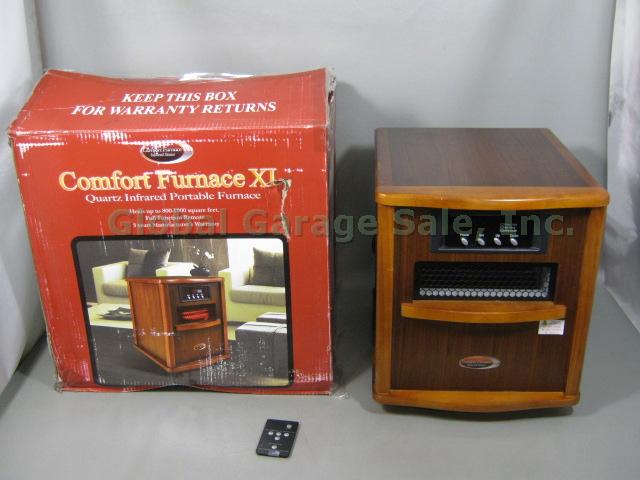Comfort Furnace Infrared Heater
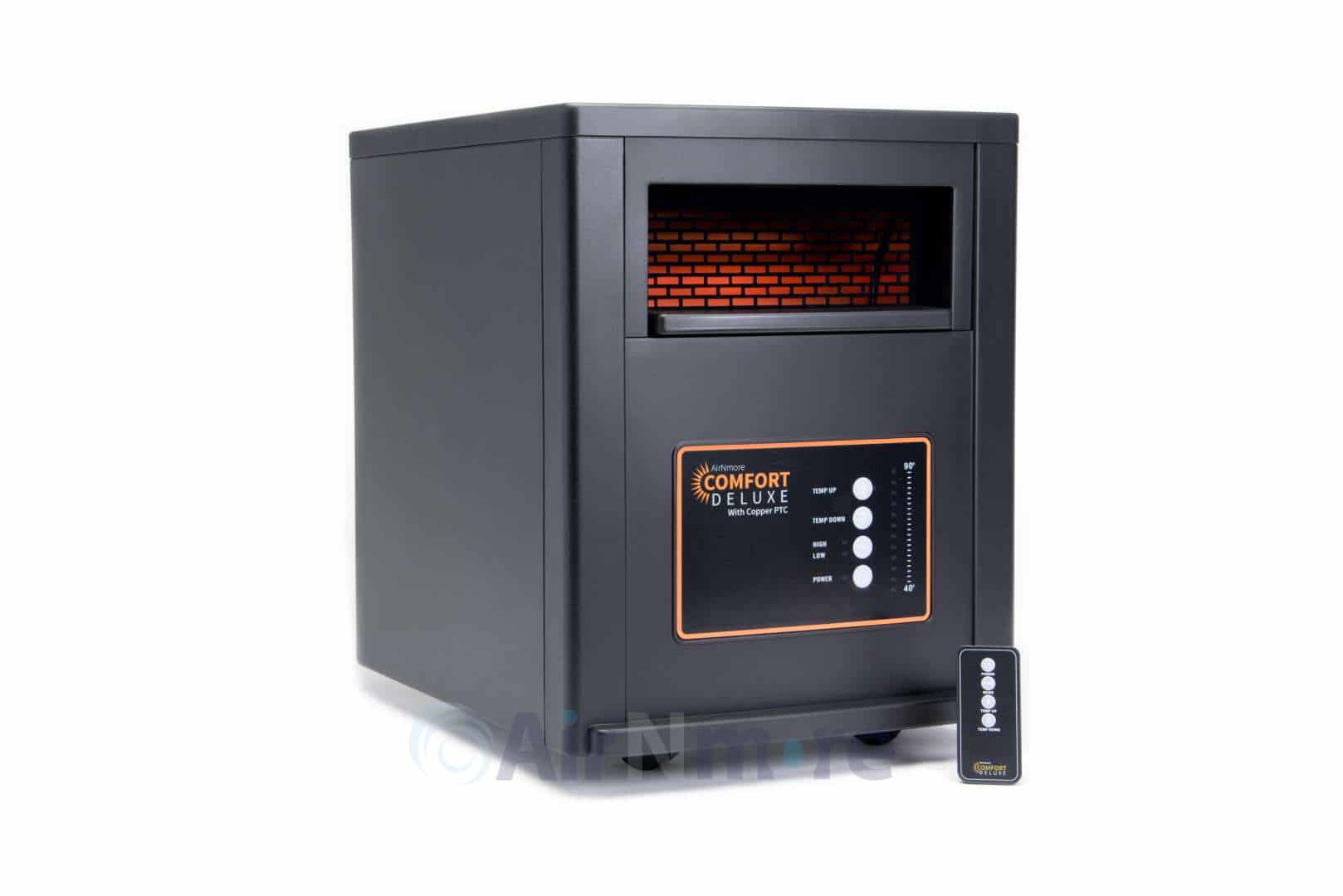
Frequently Asked Questions about Comfort Furnace Infrared Heaters
Welcome! This FAQ provides answers to common questions about Comfort Furnace Infrared Heaters. We aim to provide clear, concise information to help you understand the benefits and features of these popular heating solutions.
Q: What is a Comfort Furnace Infrared Heater and how does it work?
A Comfort Furnace Infrared Heater is a portable space heater that uses infrared technology to warm objects and people directly, rather than heating the air itself. Imagine the warmth of the sun – that's similar to how an infrared heater works. Instead of circulating hot air, which can be inefficient, infrared heaters emit radiant heat that is absorbed by nearby surfaces. This targeted heating can be a very energy-efficient way to warm a specific area.
Q: Are Comfort Furnace Infrared Heaters energy efficient? How much can I save on my heating bill?
One of the biggest advantages of infrared heaters like the Comfort Furnace is their potential for energy savings. Because they heat objects and people directly, you can often lower your thermostat while still feeling comfortable. Here's a breakdown:
- Zonal Heating: You only heat the rooms you're using, rather than the entire house. This is especially useful if you spend most of your time in one or two rooms.
- Reduced Thermostat Settings: By providing direct warmth, you can often lower your main thermostat setting by several degrees without sacrificing comfort. Each degree you lower your thermostat can result in significant energy savings.
- Energy Consumption: Comfort Furnace heaters typically consume around 1500 watts on their highest setting, which is comparable to many other space heaters. However, the efficiency comes from *how* that energy is used. Instead of heating the air, it's used to generate radiant heat.
Calculating exact savings is difficult, as it depends on factors like your insulation, your existing heating system, your thermostat settings, and how often you use the heater. However, many users report noticeable reductions in their heating bills when using Comfort Furnace heaters as a supplement to their central heating system. Think of it as a way to "spot heat" only the areas you need, when you need them. The more you use the heater in place of your central heating, the more you are likely to save. For example, if you set your whole-house thermostat to 65°F and then heat your living room to 72°F with the Comfort Furnace, you are likely saving on heating costs when compared to heating your entire house to 72°F.
Q: Are Comfort Furnace Infrared Heaters safe to use? What safety features do they have?
Safety is paramount when it comes to any heating appliance. Comfort Furnace Infrared Heaters are designed with several safety features to minimize risks:
- Overheat Protection: The heater will automatically shut off if it detects that it's overheating. This prevents potential fire hazards.
- Tip-Over Switch: If the heater is accidentally tipped over, it will automatically shut off. This is a crucial safety feature, especially in homes with children or pets.
- Cool-Touch Exterior: The exterior of the heater is designed to stay relatively cool to the touch, even when the heater is operating at high settings. This reduces the risk of accidental burns. However, it's still important to exercise caution and avoid prolonged contact with the heater surface.
- Durable Construction: Comfort Furnace heaters are typically built with high-quality materials to ensure durability and longevity.
While Comfort Furnace heaters are designed with safety in mind, it's important to follow basic safety precautions:
- Keep flammable materials (curtains, furniture, paper) at least 3 feet away from the heater.
- Never leave the heater unattended while it's in operation.
- Do not use the heater in bathrooms or other damp environments.
- Do not use an extension cord with the heater. Plug it directly into a wall outlet.
- Regularly inspect the heater for any signs of damage (cracked housing, frayed cords).
Q: What size Comfort Furnace do I need for my room?
Determining the right size Comfort Furnace depends on the size of the room you want to heat and the level of insulation. While Comfort Furnace doesn't officially publish a sizing chart, a good rule of thumb is as follows:
- Small Room (up to 150 sq ft): A smaller Comfort Furnace unit is generally sufficient. These units typically have lower wattage settings.
- Medium Room (150-300 sq ft): A standard Comfort Furnace unit (typically 1500 watts) is usually adequate.
- Large Room (300-500 sq ft): You may need to supplement with additional heat or consider using multiple heaters, especially if the room is poorly insulated.
Consider these factors when choosing a size:
- Insulation: Poorly insulated rooms will require more heating power.
- Climate: Colder climates will require more powerful heaters.
- Desired Temperature: If you prefer a very warm room, you may need a larger heater.
- Room Usage: Rooms with high ceilings may require more powerful heaters.
It's always better to err on the side of a slightly larger heater, as you can always turn it down to a lower setting. A heater that's too small will struggle to adequately heat the room.
Q: What are the pros and cons of using a Comfort Furnace Infrared Heater compared to other types of heaters?
Here's a comparison of the advantages and disadvantages of Comfort Furnace Infrared Heaters:
Pros:
- Energy Efficient: Heats objects and people directly, reducing energy waste.
- Zonal Heating: Allows you to heat only the rooms you're using.
- Portable: Easy to move from room to room.
- Quiet Operation: Generally operate very quietly.
- Safe: Equipped with safety features like overheat protection and tip-over switch.
- No Drying Air: Unlike some forced-air heaters, infrared heaters don't dry out the air.
Cons:
- Limited Range: Infrared heat is most effective in close proximity to the heater.
- Doesn't Heat the Air: If you prefer to heat the entire room, an infrared heater may not be the best option.
- Can Be Pricey: Comfort Furnace heaters can be more expensive than some other types of space heaters.
- Potential for Hot Spots: Objects directly in front of the heater may become warmer than other areas of the room.
Compared to other heater types:
- Compared to Forced-Air Heaters: Infrared heaters are more energy efficient for zonal heating but may not be as effective for heating an entire room. Forced-air heaters can also dry out the air.
- Compared to Oil-Filled Radiators: Infrared heaters heat up faster and provide more direct warmth. Oil-filled radiators provide more consistent, ambient heat but take longer to warm up.
- Compared to Ceramic Heaters: Both types are portable and relatively energy-efficient. Infrared heaters provide more directional heat, while ceramic heaters are better for heating small spaces.
Q: How do I clean and maintain my Comfort Furnace Infrared Heater?
Proper cleaning and maintenance will extend the life of your Comfort Furnace heater and ensure its safe operation.
- Unplug the Heater: Always unplug the heater before cleaning.
- Allow to Cool: Let the heater cool down completely before cleaning.
- Clean the Exterior: Wipe the exterior of the heater with a soft, damp cloth. Avoid using harsh chemicals or abrasive cleaners.
- Clean the Grill: Use a vacuum cleaner with a brush attachment to remove dust and debris from the grill. This will help maintain airflow and prevent overheating.
- Inspect the Cord: Regularly inspect the power cord for any signs of damage (frays, cracks). If the cord is damaged, it should be replaced by a qualified technician.
- Storage: When not in use, store the heater in a clean, dry place. Consider covering it to protect it from dust.
Do not attempt to disassemble or repair the heater yourself. If you encounter any problems, contact a qualified service technician.
Q: What is the typical lifespan of a Comfort Furnace Infrared Heater?
With proper care and maintenance, a Comfort Furnace Infrared Heater can last for several years. The lifespan depends on factors like usage frequency, environmental conditions, and how well the heater is maintained. Generally, you can expect a Comfort Furnace to last 5-7 years with regular use. Some units may last longer, especially if they are used sparingly and well-maintained.
Factors that can affect lifespan:
- Overuse: Running the heater constantly at high settings can shorten its lifespan.
- Dust and Debris: Allowing dust and debris to accumulate inside the heater can cause overheating and damage.
- Improper Storage: Storing the heater in a damp or dusty environment can lead to corrosion and other problems.
- Power Surges: Power surges can damage the heater's internal components. Using a surge protector can help protect the heater.
By following the manufacturer's recommendations for cleaning and maintenance, you can maximize the lifespan of your Comfort Furnace Infrared Heater and enjoy its benefits for many years to come.
